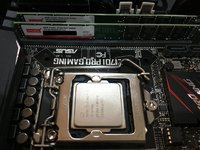I disagree, Dan is not doing us all a favor, it's a business venture since he's in this to make money. I was following this thread hoping to see the best cooler designed and tested for usage in his case, not an open air environment.
It would be very hard for me to believe this project is only profit motivated. Dan is a small form factor enthusiast who probably doesn't want to starve working on a labor of love.
![[H]ard|Forum](/styles/hardforum/xenforo/logo_dark.png)



